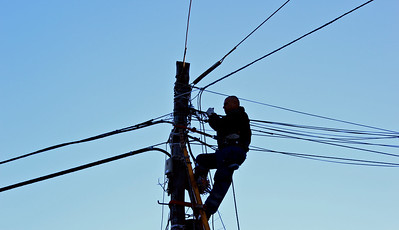The move toward increased dependence on electricity as an alternative to fossil fuels has created increased demand for electricians. According to the Bureau of Labor Statistics, one out of five electricians working in the field today will reach retirement age in the next decade. At the same time, the BLS also predicts job openings of nearly 80,000 for certified electrical workers each year.
That increase is needed to both replace retiring workers and meet the growing demand for electrical services. Across the country, solar panels, electric vehicles, and heating and cooling equipment, along with generous federal rebates for conversion from fossil fuels to electricity are driving both consumer and commercial demand for certified electrical workers.
In addition, utility companies have their own increasing demand for electricians to support the rising demands on their power infrastructure. Demand is not the utilities’ only concern. As power producers retire coal-fired power plants, they’re also modernizing their remaining plants and upgrading their electrical infrastructure. Climate change is driving shifting seasonal weather patterns. This will require winterization of power transmission systems to avoid the catastrophic impact of sub-freezing temperatures in areas that normally experience mild winters.
Moving toward the elimination of residential fossil fuel consumption will rely on having enough certified electricians to enable a rapid transition. According to data compiled by the US Census Bureau and the California Department of Industrial Relations, California has one certified electrician for every 500 housing units in the state. In Michigan, the demand is not as critical. The State of Michigan has about 4.6 million housing units and about 22,300 electricians. Using these figures, there is approximately one certified electrician for every 200 housing units in the state.
Electricians have high-wage, high-demand jobs
Of course, not every electrician works in a residential capacity. The state’s manufacturing, construction, power generation, and automotive industries employ a large number of certified electrical workers. Additionally, Michigan can expect to lose about 2,500 of today’s electrical workers to retirement within the decade. Currently, about 3% of all certified electricians in the United States work in Michigan, which makes them an attractive recruiting target for states like California where the demand for electrical workers is overwhelming.
Despite this, Michigan ranks in the bottom third for starting pay for electrical workers with an average entry level starting salary of $46,000. Minnesota tops the salary list for entry level electricians, with an average annual wage of $56,500. Current job postings in the Metro Detroit area for entry-level electrical work offer pay rates of between $25 and $35 per hour. Journeymen can make as much as $45 per hour. According to Zip Recruiter, journeyman electricians make more on average in Ann Arbor than in any other city in Michigan.
This is just one example of the high-wage, high-demand occupational programs WCC should be investing in.
Photo Credit: Oswaldo Rubio, via Flickr










